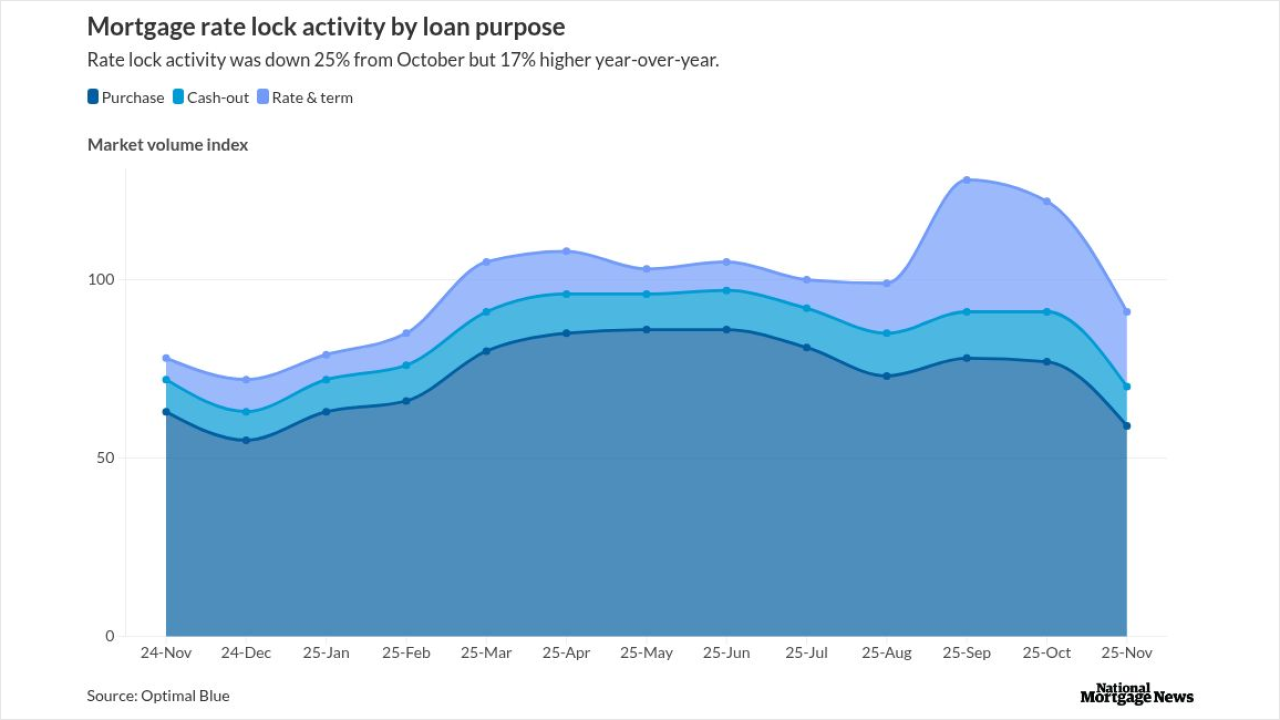There is plenty of uncertainty heading into 2025, and that's actually good for the U.S. collateralized loan obligation (CLO) market, so long as the uncertainty doesn't metastasize into factors that upset the economy's current soft-landing trajectory.
"It's the best of both worlds for CLO tranches," said Himani Trivedi, head of structured credit at Nuveen, which recently launched a CLO ETF focusing its investments on single A CLOs.
Trivedi said that fewer than previously anticipated interest-rate cuts—due largely to uncertainty about inflation's direction—will keep CLOs' floating-rate returns attractive. However, even marginally lower interest rates will still bolster the economy, improving leveraged borrowers' bottom lines and their interest-coverage ratios which are already strong.
Other market observers foresee a similar outcome next year. S&P Global Ratings noted in a December 13 report that after two years of muted activity in the CLO market, US CLO issuance revived in 2024 and broke the record for annual volume of resets and refinancings by mid-November, and the record for new issuance a few weeks later.
Investor demand tightened spreads of newly issued CLOs pooling broadly syndicated loans (BSLs) by 100 basis points since they peaked in December 2022, S&P says. The basis between BSL CLO AAAs and middle market (MM) AAAs has fallen to historically tight levels, as has the basis between tier one and non-tier CLO managers. That demand, coupled with a resurgence of M&A and LBO activity generating new collateral for the issuance of new CLOs, could see 2025 breaking new origination records.
"Robust investor demand for high-quality floating-rate assets should keep CLO tranche spreads tight, and we expect $205 billion of CLO issuance in 2025," S&P says.
Such issuance will surpass 2024's, which comprised approximately $155.5 billion in BSL CLOs and another $36.3 billion in MM CLOs, according to S&P.
Stronger leverage loan borrowers
In terms of a strengthening leveraged loan borrower, Fitch Ratings says in its December outlook for structured finance in 2025 that it expects the U.S. BSL leveraged default rate to drop in 2025 to between 3.5% and 4%, down from the 2024 end-of-year forecast of 5.0% to 5.5%, with its Market Concern Loans list falling to 11.9% from its most recent peak of 16.7% in July 2023.
"In 2024, some weaker issuers were able to stave off default by turning to private debt lenders and negotiating an option to pay a portion of interest in kind," Fitch says. "This additional source of capital will remain available in 2025 and beyond, helping to release pressure from BSL CLOs."
Sponsor-friendly spreads
Another factor likely to fuel CLO issuance next year is the currently low spreads at which sponsors can lock in their cost of financing across the CLO capital structure. Spreads on the leveraged loans they're buying are currently also tight but likely to widen over the five-year reinvestment periods of most CLOs, improving CLO arbitrage.
"The headline number for projected IRR (internal rate of return) can look great now, in the low teens, but when you run scenarios where managers can reinvest into wider spreads over the five-year reinvestment period, that's very compelling for CLO equity," said Alyssa Irving, fixed-income portfolio manager at Wellington Management.
The soft economic landing appears to be on track heading into 2025. Fitch's report notes uncertainties today that could turn into economic performance disruptors, starting with increasing policy and geopolitical risk, including President-elect Donald J. Trump's tariff threats, unexpected changes to key economic policies, and escalating conflicts around the world. In addition, persistent inflation and rising rates could burden households and businesses and potentially lead to a recession and new challenges for leveraged borrowers.
Internal changes
Assuming no external factors adversely impact the CLO market, market participants are likely to see changes stemming from within the CLO and leveraged loan markets. For one, the American Academy of Actuaries (AAA) is expected to release in early 2025 a framework anticipated to become the standard for calculating CLOs' risk-based capital (RBC) charges. If it echoes preliminary models released in early December by the National Association of Insurance Commissioners (NAICs), insurers will receive more favorable capital treatment investing in CLO tranches rated single A and above, and less favorable for BBB and below.
"I expect insurers' demand to increase for single A and AA bonds," Irving said.
Another factor is the rapid growth of CLO exchange-traded funds (ETFs), the volume of which nearly doubled in 2024, to approximately $20 billion. S&P's report says the ETFs are likely contributing to the current spread tightening and improving liquidity of CLO tranches.
"If the CLO ETF market continues to grow at its current pace, it is possible that ETFs could increase CLO note price volatility in the case of a severe market dislocation," S&P says.
John Kerschner, head of U.S. securitized products and a portfolio manager at Janus Henderson Investors, said market turbulence in late July through early August led to brief outflows from his firm's BBB CLO ETF (JBBB) that quickly reversed, leading to strong inflows since then. Its AAA CLO ETF (JAAA), now at about $16.6 billion, has captured more than three quarters of the CLO ETF market, and JBBB has reached $1.4 billion.
In terms of CLO ETF growth in 2025, Kerschner noted estimates of the CLO market growing by $50 billion or more, fueled in part by new loans from increased M&A activity.
"CLO ETFs combined are about 2% of the overall CLO market, and that isn't a huge percentage," Kerschner said. "So I don't think its size is a limiting factor."




